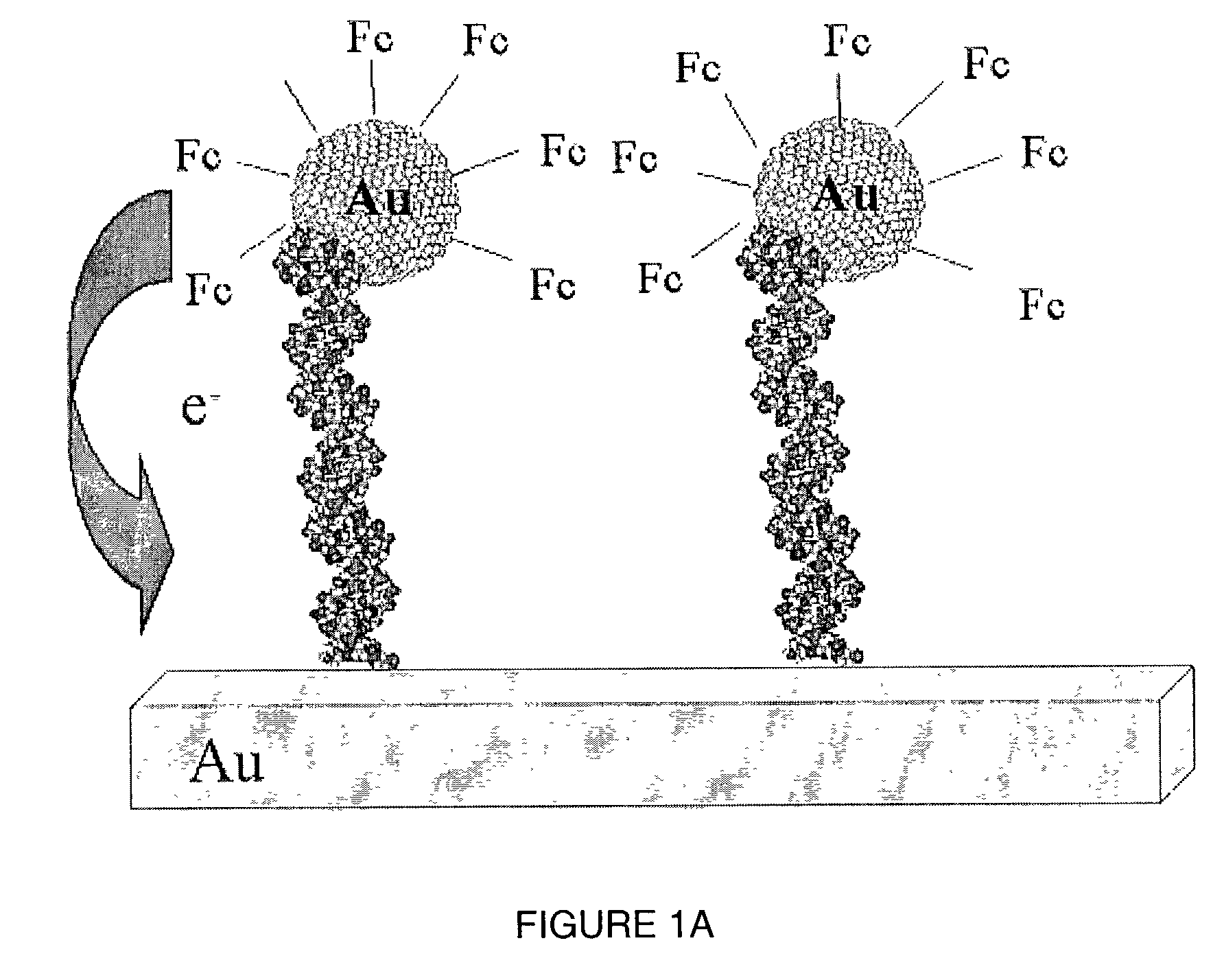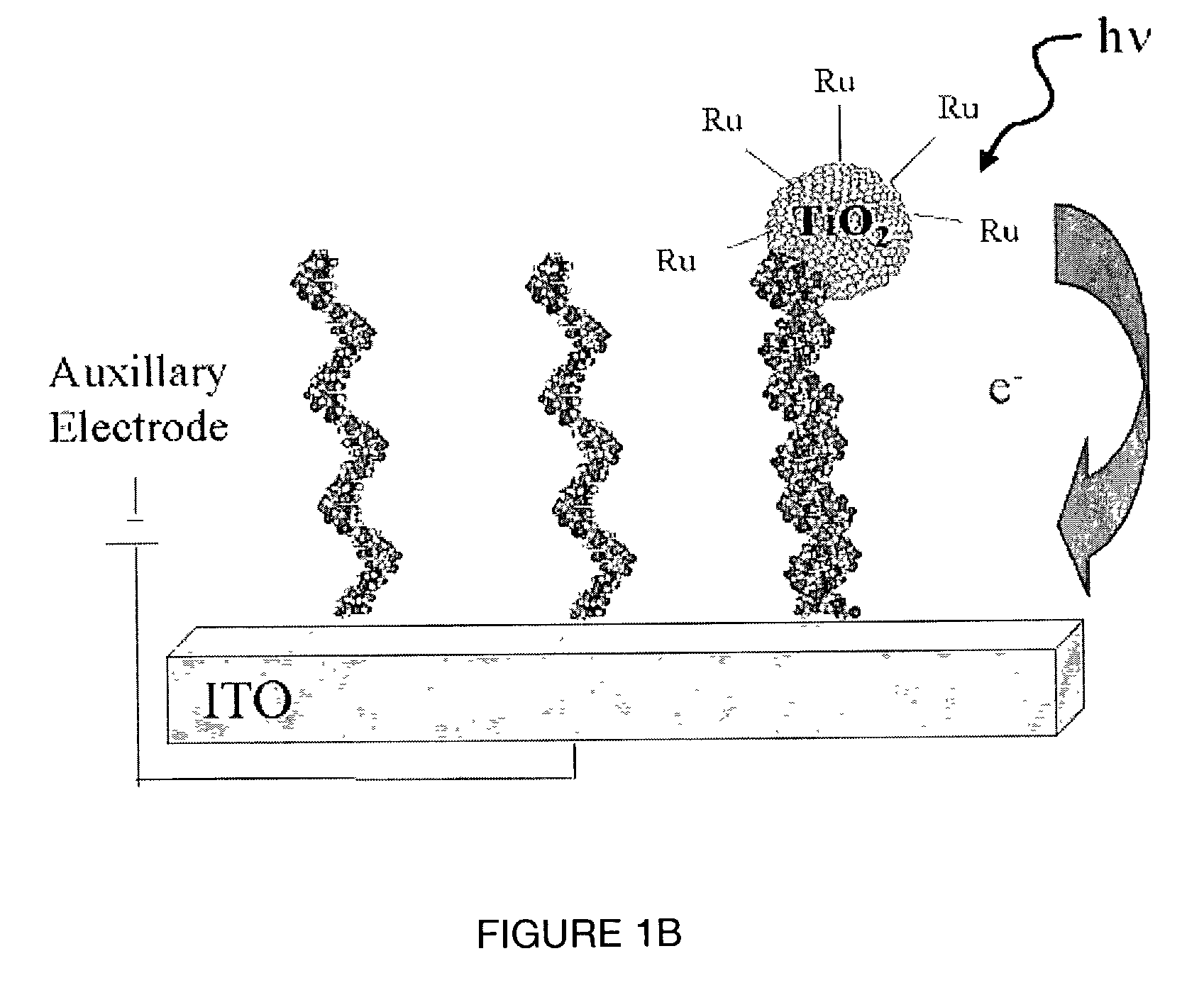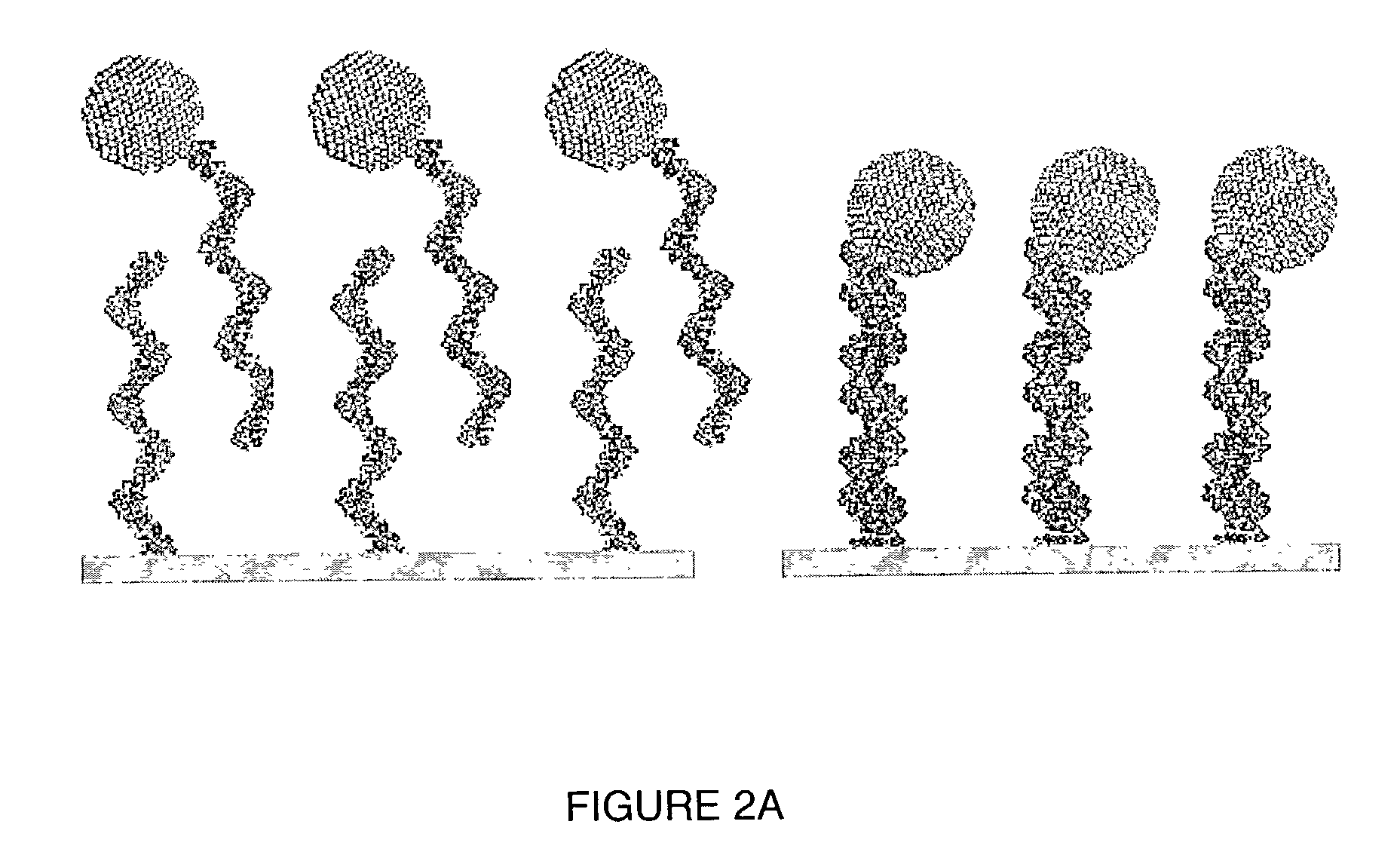Light addressable electrochemical detection of duplex structures
a duplex structure and light-addressable technology, applied in the direction of instruments, material electrochemical variables, energy input, etc., can solve the problems of affecting the use of microchip and microarray technology in routine diagnostic and other applications, affecting the sequence of hybridization assays, and requiring cumbersome procedures
- Summary
- Abstract
- Description
- Claims
- Application Information
AI Technical Summary
Benefits of technology
Problems solved by technology
Method used
Image
Examples
example 1
Laboratory Example 1
Generation of DNA-Nanoparticle Complexes and Support-Bound DNA
[0221]DNA-nanoparticle conjugates were synthesized to serve as targets of surface-attached DNA oligonucleotide probes. Single-stranded DNA was attached to gold particles having sizes ranging from 5 to 30 nm. Single stranded DNA was attached using methods disclosed herein. Briefly, single stranded DNA was exposed to phosphine, which attached at the 5′ terminal end of the DNA sequence. The phosphine-DNA moiety was then subjected to thiol deprotection in the presence of gold particles, whereby the single stranded DNA was bound to the gold particle.
[0222]In a separate step, complementary DNA was bound to the surface of a gold support using an alkane thiol linker, C6 mercaptohexanol in accordance with techniques described by Loweth et al., (1999) Angew. Chem. Int. Edit. 38: 1808-12, and Storhoff & Mirkin, (1999) Chem. Rev. 99: 1849-62. Briefly, solutions of single stranded DNA and C6 mercaptohexanol were pr...
example 2
Laboratory Example 2
Characterization of Nanoparticle-Containing DNA Duplexes
[0223]A height mode scanning tunneling microscopy (STM) image of (surface-bound DNA)-(DNA-nanoparticle) duplexes is shown in the lefthand panel of FIG. 3B. The righthand panel of FIG. 3B is a current mode STM image of the same DNA duplexes depicted in FIG. 3A. The duplexes were formed on the surface of a gold support, and thus demonstrate that duplexes form on a suitable support surface.
[0224]Single stranded 31 mer probe DNA sequences were bound to a gold support via reaction with C6 mercaptohexanol as described in Laboratory Example 1. The DNA sequences were commercially prepared using standard nucleic acid synthetic methods. Complementary single stranded target DNA sequences were also prepared synthetically. The target DNA was subsequently bound to nanoparticles 5 nm in size. The scheme by which the nucleic acid targets were bound to nanoparticles is presented in schematic form in FIG. 8. Generally, single...
example 3
Laboratory Example 3
Development of Experimental Controls
[0227]Controls were developed and employed to ensure that the nanoparticles were localized to single stranded DNA bound on the surface of the support, concurrent with the formation of DNA duplexes. Controls are helpful to show a lack of binding when a component of the system (e.g. surface-bound single stranded DNA, gold particles with single stranded DNA bound) is absent. The STM images presented in FIGS. 4A-4C show there is no adsorption of DNA-nanoparticle conjugates on surfaces where non-complementary DNA, no DNA, or only C-6 hydroxy thiols are present.
PUM
| Property | Measurement | Unit |
|---|---|---|
| diameter | aaaaa | aaaaa |
| diameter | aaaaa | aaaaa |
| diameter | aaaaa | aaaaa |
Abstract
Description
Claims
Application Information
 Login to View More
Login to View More - R&D
- Intellectual Property
- Life Sciences
- Materials
- Tech Scout
- Unparalleled Data Quality
- Higher Quality Content
- 60% Fewer Hallucinations
Browse by: Latest US Patents, China's latest patents, Technical Efficacy Thesaurus, Application Domain, Technology Topic, Popular Technical Reports.
© 2025 PatSnap. All rights reserved.Legal|Privacy policy|Modern Slavery Act Transparency Statement|Sitemap|About US| Contact US: help@patsnap.com



